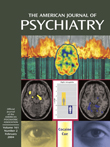Is classical Freudian psychoanalytic theory applicable in the treatment of people of color? How does one conceptualize the therapeutic process in the context of cross-cultural psychotherapy? These are the key questions Judith Mishne seeks to address in her book.
Citing reviews of cross-cultural treatment considerations, the literature on race and culture in clinical practice, and the impact of migration and the changing U.S. demography from the 1950s to 1990s, Dr. Mishne deplores how psychotherapy failed to keep pace with cultural change. She argues for the relevance of applying broadened psychoanalytically oriented therapy for people of color. She illustrates the utility of such newer psychoanalytic concepts by applying and explicating them in the ethnic patients she has treated. Dr. Mishne reviews key therapeutic issues, summarizes new analytic concepts, and attempts to incorporate these concepts into the phases (beginning, middle, and end) of the therapeutic process. She provides detailed and rich case material to buttress her points and highlights cross-cultural issues. She quickly debunks the bias that minority patients lack the capacity for introspection and insight.
I found the presentation and discussion of the cases most interesting and valuable. The review of key analytic concepts in each phase of the therapy is useful. The selected middle- and upper-class African American and Hispanic patients are verbal, intelligent, and introspective. Individuals of other ethnic backgrounds, such as Asian Americans and Native Americans, are not described. This omission limits the book’s wider appeal.
Although Dr. Mishne discusses many cultural issues and clinical vignettes from the analytic perspective, the volume lacks the incorporation of key anthropological and sociological concepts. The addition of these concepts could have enriched the analytic theories. For example, Asian, Hispanic, and Native Americans all share the value of harmony with the family and the ecological world as a concept of health, which can influence the establishment of a therapeutic relationship, affect how and when a patient may want to disclose intimate information and handle interpretation and confrontation by the therapist, and even dictate the goal and endpoint in psychotherapy. As an example: should Asian Americans who have conflictual relationships with their family members be encouraged to leave the family or should they be encouraged to realign their object relations and remain within the family? Culture determines what is therapeutically salient and appropriate. The author shows that in the hands of competent therapists, dynamically oriented therapy can be useful in freeing potential conflicts and in achieving lasting benefits. This book is useful for clinicians interested in applying psychoanalytically oriented psychotherapy across cultures.

